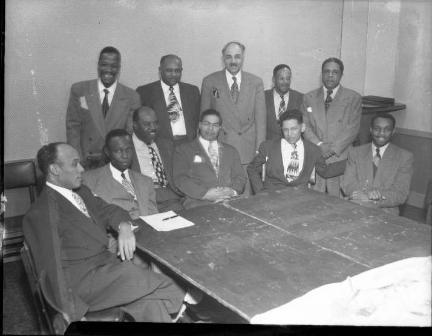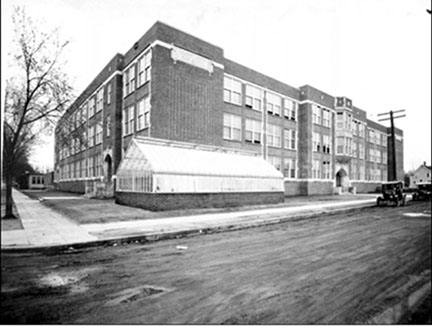Writing the context study
During the engagement phase, community members shared stories about people, places, and events in Minneapolis. The consultant team wrote an outline for the context study. In this second phase, we used that outline to write the context study. The context study was completed in June 2025.
We received a state grant and hired 106 Group as the consultant. Judge LaJune Lange and Denise Pike were technical advisors. We formed the African American Heritage Work Group (AAHWG) with 15 community members. They gave input at key stages. They shared their lived experiences and knowledge.
This process includes:
This project was made possible in part by the people of Minnesota through a grant funded by an appropriation to the Minnesota Historical Society from the Minnesota Arts and Cultural Heritage Fund.
Visit the Minnesota Historical Society website to learn more

King Solomon’s Mines was located on the first floor of the Foshay Tower.
Photo credit: Mike Zerby, courtesy of the Minnesota Historical Society
Context study
The context study focuses on African American heritage in Minneapolis from the 1820s to the present day. It is divided into seven themes:
- Arrival
- Residential Life and Neighborhoods
- Religion and Houses of Worship
- Employment and Professional Growth
- Community, Social Organizations, Recreation, and Education
- Arts, Design, Music, and Culture
- Segregation, Discrimination, Civil Rights, and Reclamation
The consultant team conducted research and wrote a chapter on each theme. Staff and various stakeholders reviewed drafts of the context study. The final context study helps us understand what places in Minneapolis reflect the history of African Americans. The context study has a lot of rich stories and is also not comprehensive. More stories can and should be uplifted in the future.

A group of African American civic leaders. They include: Jimmie Slemmons, William Donald Brown, Sr., Harry Davis, Sr., James Wardlaw, A.B. Cassius, James Cannon, and William Manson Seabron.
Photo credit: Hennepin County Library and the children of John Glanton
Survey process
We surveyed 25 properties in Minneapolis that might be important to African American heritage. The properties relate to the seven themes. The AAHWG selected the list with support from staff and the consultant. We asked property owners for consent to survey their property.
- The consultant took photos of each property and did some research.
- They recommended if each property is historically significant.
- They prepared survey forms and a report.
- Staff and various stakeholders reviewed the survey forms and report.
Of the 25 properties, 17 are still standing and may be eligible for historic designation.

Bryant Junior High School, which is now Sabathani Community Center.
Photo credit: Minnesota Historical Society
Engagement
The AAHWG included people from different generations with various ties to Minneapolis. They met 7 times and meetings were open to the public.
The AAHWG:
-
- Gave guidance on the research design
- Made comments on the context study draft
- Considered various ways to recognize African American heritage
- Selected historical sites for the survey
Staff attended community events throughout the year to share information.

Members of the AAHWG with Council Member Jenkins
Contact us
Erin Que
Community Planning & Economic Development (CPED)
Phone
Address
Public Service Building
505 Fourth Ave. S., Room 320
Minneapolis, MN 55415

